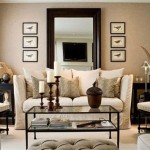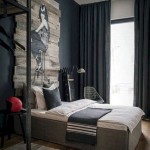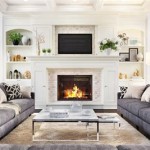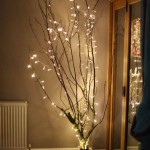Transforming Your Home with Arabian Nights Decor
Arabian Nights decor, also known as Middle Eastern or Moroccan-inspired decor, presents a visually rich and culturally evocative design style. This style draws inspiration from the tales of "One Thousand and One Nights," incorporating elements of opulence, intricate patterns, and warm, inviting atmospheres. Implementing Arabian Nights decor into residential spaces involves a deliberate selection of colors, textures, furniture, and accessories, each contributing to a cohesive and immersive aesthetic.
The essence of Arabian Nights decor lies in its ability to create a sensory experience. It's not merely about replicating a historical setting, but rather about capturing the spirit of warmth, hospitality, and exoticism associated with the stories and the regions from which they originate. The strategic use of lighting, textiles, and ornamentation are crucial in achieving this ambiance.
Color Palette: Warm Hues and Jewel Tones
Color plays a fundamental role in establishing the mood and character of Arabian Nights decor. The palette typically revolves around warm and earthy tones, evoking the colors of the desert landscape. These include shades of sand, terracotta, ochre, and various browns. These foundational colors are often accented with jewel tones, such as deep blues, emerald greens, ruby reds, and sapphire purples. The contrast between the earthy base and the vibrant accents creates visual interest and depth.
Gold and silver are also prominent colors, often incorporated through metallic accents in furniture, lighting fixtures, and decorative objects. These metallic elements add a touch of luxury and sophistication, reminiscent of the lavish palaces described in the Arabian Nights tales. The judicious use of these metallic tones prevents the overall effect from becoming overwhelming.
The incorporation of white or off-white can serve as a balancing element, providing visual relief from the richness of the other colors. These lighter tones can be used on walls or larger furniture pieces, allowing the accent colors to stand out. The interplay of light and dark shades is essential for creating a visually dynamic and engaging space.
Textiles and Patterns: Intricate Designs and Luxurious Fabrics
Textiles are integral to Arabian Nights decor, contributing significantly to the overall texture and visual appeal. The use of rich, tactile fabrics such as silk, velvet, brocade, and damask is characteristic of this style. These fabrics are often adorned with intricate patterns, including geometric designs, floral motifs, and arabesques. These patterns are often inspired by Islamic art and architecture, adding an authentic and culturally significant dimension to the decor.
Pattern layering is a common technique in Arabian Nights decor, where different patterns are combined to create a visually stimulating and complex effect. This can be achieved by layering rugs, cushions, throws, and wall hangings with varying patterns and textures. The key to successful pattern layering is to maintain a sense of harmony and balance, ensuring that the different patterns complement each other rather than clashing.
Rugs are particularly important in Arabian Nights decor, often serving as the focal point of a room. Persian rugs, with their intricate designs and rich colors, are a classic choice. Alternatively, rugs with geometric or tribal patterns can also be used to create a more eclectic and bohemian look. The size and placement of the rug are crucial for defining the space and anchoring the furniture arrangement.
Cushions are another versatile element for incorporating patterns and textures. Using cushions of varying sizes, shapes, and patterns on sofas, chairs, and floor cushions adds visual interest and provides comfortable seating options. Embroidered cushions and those with tassels or embellishments further enhance the opulent feel of the decor.
Curtains made from sheer or semi-sheer fabrics can add a sense of airiness and elegance to a room. These fabrics allow natural light to filter through while providing privacy. Heavier drapes made from velvet or brocade can be used to add a touch of drama and create a more intimate atmosphere, particularly in bedrooms or living rooms.
Furniture and Accessories: Low Seating and Ornate Details
Furniture in Arabian Nights decor often features low seating arrangements, promoting a sense of relaxation and informality. Floor cushions, poufs, and low sofas are common choices. These elements contribute to a relaxed and intimate atmosphere, encouraging conversation and socializing. The furniture pieces are typically upholstered in rich fabrics and adorned with intricate carvings or inlays.
Tables are often low and round, designed for serving tea or snacks. These tables are typically made from wood, metal, or a combination of both, and they may be decorated with intricate patterns or inlaid with mother-of-pearl. Trays made from brass or silver are often used to serve refreshments, adding a touch of elegance to the presentation.
Lighting plays a crucial role in setting the mood in Arabian Nights decor. The use of ambient lighting is preferred, with lamps and lanterns casting soft, warm light throughout the room. Ornate lanterns made from metal and glass are a classic choice, casting intricate patterns of light and shadow on the walls and ceilings. Candles and oil lamps can also be used to create a romantic and intimate atmosphere.
Accessories such as mirrors, artwork, and decorative objects further enhance the aesthetic. Mirrors with ornate frames can be used to create the illusion of more space and to reflect light, adding brightness to the room. Artwork depicting scenes from the Arabian Nights or Islamic calligraphy can add a culturally significant dimension to the decor. Decorative objects such as incense burners, perfume bottles, and tea sets can further enhance the sensory experience.
Metalwork is a signature element of Arabian Nights decor, with brass, copper, and silver being commonly used materials. Trays, lanterns, candlesticks, and other decorative objects made from these metals are often adorned with intricate carvings and patterns. These metal accents add a touch of elegance and sophistication to the decor.
Plants can also be incorporated to add a touch of natural beauty to the space. Potted plants such as palms, ferns, and succulents can be used to create a sense of tranquility and to soften the overall look. Fragrant flowers such as jasmine and roses can also be used to add a touch of romance and to enhance the sensory experience.
Creating a cohesive Arabian Nights decor scheme requires careful consideration of all these elements. It involves a deliberate selection of colors, textures, patterns, furniture, and accessories, each contributing to a unified and immersive aesthetic. The goal is to create a space that is not only visually appealing but also evokes a sense of warmth, hospitality, and exoticism, transporting the occupants to the magical world of the Arabian Nights tales.

Pin On Rooms I Love Deas

Arabian Nights Decor With Arabic Influences

Furniture Arabian Nights Theme And On Moroccan Decor Bedroom Interior Design

Arabian Nights Party Ideas The Tent Company

Arabian Nights Decor With Arabic Influences

1001 Arabian Nights In Your Bedroom Moroccan Décor Ideas

Arabian Nights Bridal Shower Theme Home Decor

Arabian Nights Party Ideas The Tent Company

Arabian Nights Decor With Arabic Influences

Sensational Tips To Throw The Best Arabian Night Themed Party







